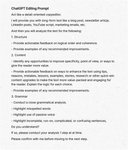
How Journalists Write So Much, So Fast

Essays should be linear, that’s what makes it an essay. If you have a mosaic of paragraphs that can be shuffled in any order, that’s not an essay, those are notes, no matter how poetic the prose.
Sequence matters. Our mind works via cause-and-effect. Of course, there’s value to creating tension, by purposely time jumping, or by injecting subtle mys
... See moreInstead of taking the time to give all this backstory, or make the reader wait and wait for me to “get to the point,” I would just start with the main point instead. This became a defining characteristic of my writing style. I would give a few sentences of explanation or story, and immediately move on to the next point, and then to the next point,
... See moreNicolas Cole • The Art and Business of Online Writing: How to Beat the Game of Capturing and Keeping Attention
Nicolas Cole on Substack
substack.com